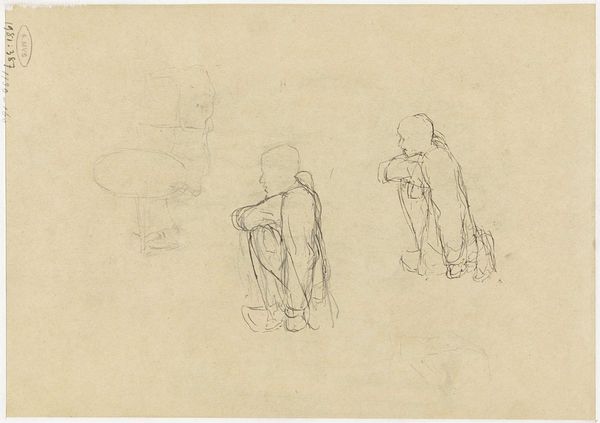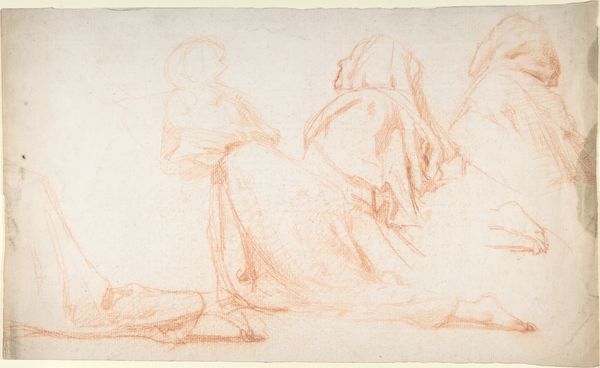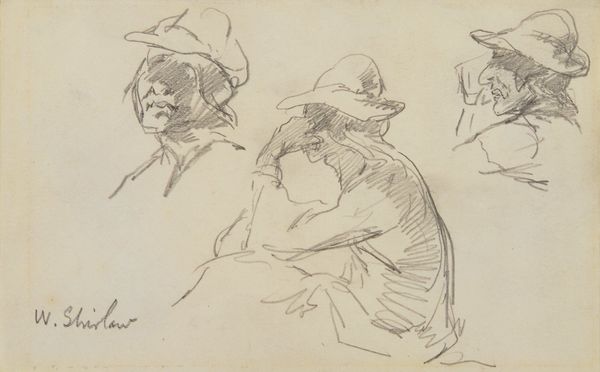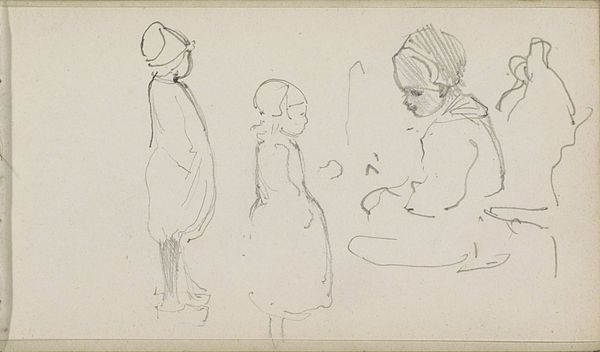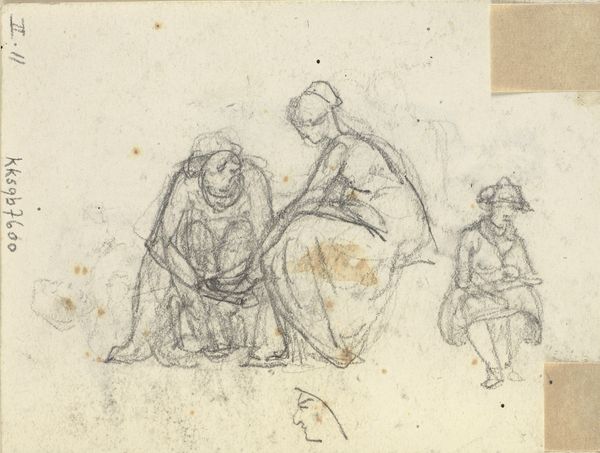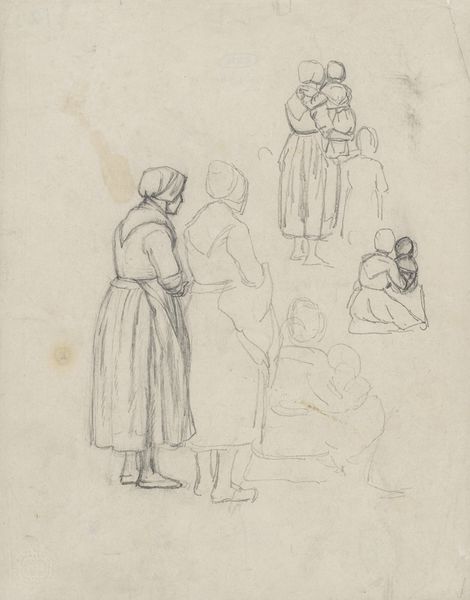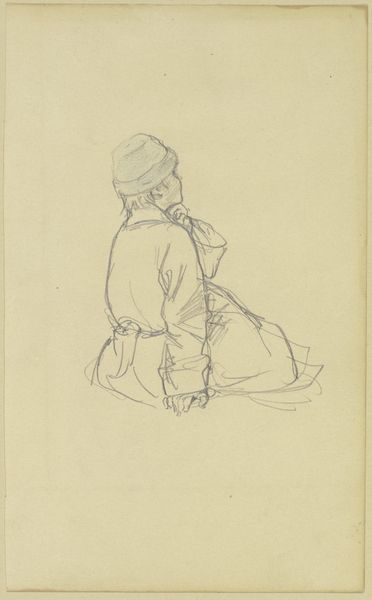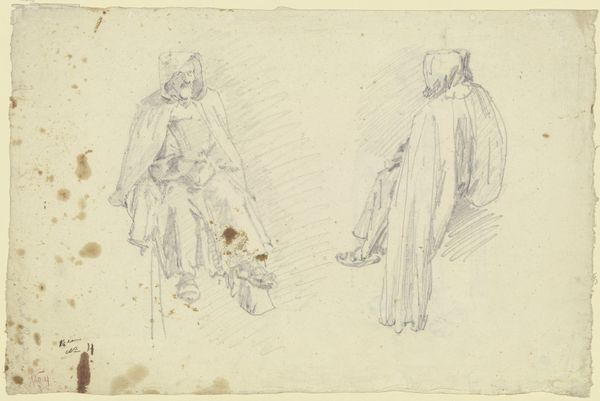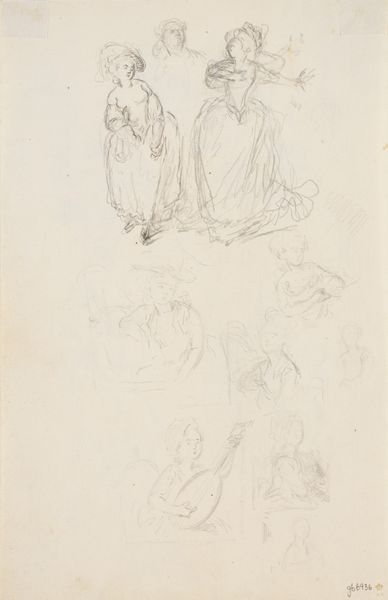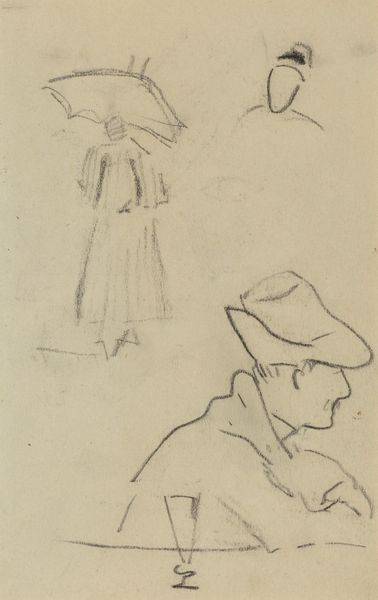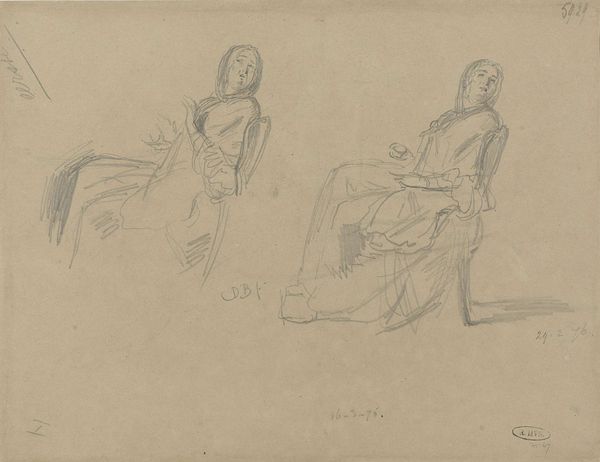
Zwei kniende Frauen in Rückenansicht, rechts eine Kiepe c. 1771 - 1772
0:00
0:00
Copyright: Public Domain
Editor: Here we have Georg Melchior Kraus’s “Two Kneeling Women Seen From the Back, with a Basket on the Right," created around 1771-1772 using graphite and pencil. The women, rendered in delicate lines, seem burdened, perhaps by the labour they're engaged in. What story do you think this sketch is trying to tell? Curator: It’s a powerful depiction. Look at how Kraus presents these women—their averted gaze, their postures suggesting weariness. Considering the era, these are likely working-class women. This sketch, beyond its aesthetic value, offers a glimpse into the lives of those often marginalized in historical narratives. Editor: Marginalized, how so? Curator: The women are observed from the back. We're not invited into their individual stories, yet their shared experience is rendered visible. What does it mean to see them represented, but also somewhat anonymous? Their kneeling postures and the Kiepe (basket) point to labor – likely strenuous physical labor. How does that make you reflect on social structures and hierarchies of the time? Editor: It does make me wonder about the economics and expectations placed on women in that period. They're kneeling; is that submissive, or is it practical? Curator: Precisely. We're prompted to consider power dynamics, gender roles, and the realities of everyday life for women. Kraus invites us to confront these realities through subtle visual cues. The ambiguity is key; it forces us to ask those hard questions about social realities of labour and representation. Editor: I see. So, this drawing isn't just a record; it's a social commentary too? Curator: Absolutely. It encourages us to consider art as a historical document, revealing unspoken narratives and prompting conversations about identity, labour, and visibility. It reminds us to engage with art not just visually, but intersectionally. Editor: I’ve never thought of it that way before! It changes how I look at everything. Curator: Hopefully, it provides a more enriched lens, encouraging all to embrace history and social issues and become more proactive with inclusivity, using it to shape critical dialogue for a better and informed future.
Comments
No comments
Be the first to comment and join the conversation on the ultimate creative platform.
